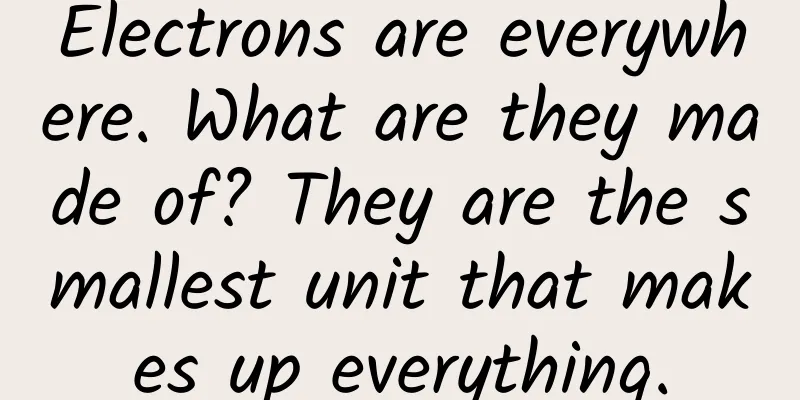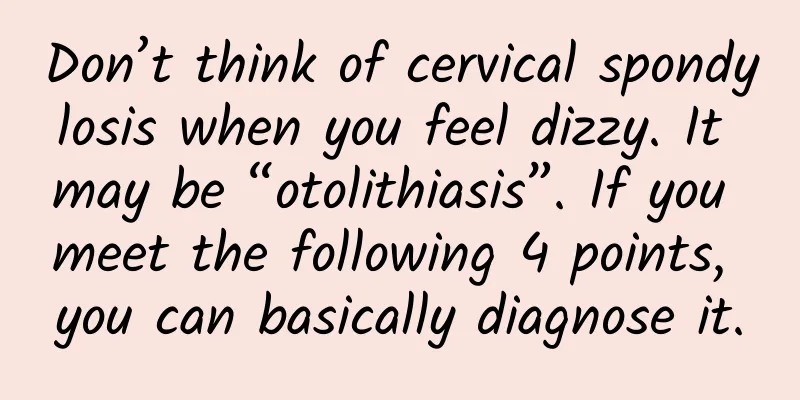Electrons are everywhere. What are they made of? They are the smallest unit that makes up everything.

|
Electronics may seem far away from our lives, but in fact they are everywhere. There are countless electrons in a mobile phone, a stone, a speck of dust, and even in our own bodies. So what exactly is an electron? What is it made of? Ever since humans had thoughts, they have been determined to pursue the origin of things. To pursue the origin of things, we must first understand what matter is made of. In the years before the birth of natural science, people could only think about this problem from a philosophical perspective, so some people regarded water as the origin of all things, and some people regarded fire as the origin of all things. The thinking of these ancient sages is really not wrong, because from the perspective of natural science, all things are indeed of the same origin, whether it is water, fire, or rocks, air, from a microscopic level, their essence is the same. What is the nature of matter? Most substances are composed of molecules. For example, water is composed of water molecules. The arrangement of water molecules will cause water to present different forms. For example, when water molecules form a directional and orderly arrangement through hydrogen bonds, water becomes ice. Water molecules are very small, only about 0.4 nanometers, hundreds or even thousands of times smaller than viruses, so they cannot be seen with the naked eye. However, water molecules are not the smallest form of matter. They are composed of atoms, two hydrogen atoms and one oxygen atom. Compared with molecules, atoms are even smaller, usually less than 0.1 nanometers, but even such small things are still not the smallest units of matter. With the development of scientific observation technology, people discovered that atoms are composed of two parts, namely the nucleus and extranuclear electrons. For an atom, electrons are extremely important. If an atom loses electrons, it will become a very unstable ionic substance. The charging and discharging process of lithium batteries we use in daily life is actually the process of lithium atoms losing electrons and becoming lithium ions, and then merging with electrons to restore lithium atoms. When charging, stimulated by an external power source, the lithium atoms in the positive electrode material of the lithium battery will decompose into lithium ions and electrons. After decomposition, lithium ions can directly pass through the diaphragm between the positive and negative electrodes of the battery to the negative electrode, while electrons go to the negative electrode through the external circuit, and then meet at the negative electrode and recombine into lithium atoms. Similarly, when discharging, lithium atoms will decompose into lithium ions and electrons again. The lithium ions will return to the positive electrode from the diaphragm, while the electrons will return to the positive electrode through the external circuit, passing through the electrical appliances on the way to provide them with electrical energy. A complete atom includes the nucleus and the electrons outside the nucleus, so can these two things be further divided? The nucleus can be divided. There are two things inside the nucleus, one is the proton and the other is the neutron. The number of protons determines the type of element. For example, the element with one proton is hydrogen, and the element with two protons is helium. The number of neutrons determines the different isotopes. For example, the element with one proton and one neutron is the isotope of hydrogen, deuterium, and the element with one proton and two neutrons is the isotope of hydrogen, tritium. Different numbers of protons and neutrons determine different elements, so can protons and neutrons be further divided? In order to see what is inside protons and neutrons, humans have used particle colliders, but even so, they have not been able to knock them apart. But this does not mean that there is nothing inside protons and neutrons. Because when it collides, people find that protons have three different scattering angles, which means there are three particles inside the proton, and they are named quarks. Humans have never succeeded in breaking apart protons, because the force that binds quarks together is a strong force, which is not like the electromagnetic force, where the force decreases with distance, but increases with distance. Therefore, there is no way to pull three quarks apart, and quarks are also defined as elementary particles, which are the smallest structures that make up matter. So far, humans have discovered many elementary particles, and the quarks that make up protons and the electrons outside the nucleus are among them. Yes, like quarks, electrons are also elementary particles, the smallest units that make up matter, and are indivisible. Therefore, there is no way to explain what electrons are made of, because they themselves are the smallest unit of matter. Although there are many types of elementary particles, they can be divided into two categories, one is fermions and the other is bosons. They are both the smallest units of matter, but they play different roles. Fermions are the smallest units of material structure, while bosons are the medium for transmitting interactions. For example, the strong force that binds three quarks tightly is transmitted through bosons such as gluons. If fermions are bricks, then bosons are cement. Obviously, electrons and quarks are both fermions, while gluons, photons, etc. are all bosons. For more information, please follow the official account: sunmonarch |
>>: The history of the battle between elephant ghosts and machines
Recommend
Information flow account is not growing? How to solve it?
You may have heard a lot of information flow tech...
3 new customer acquisition cases, 3 key logics for attracting new customers!
There are many ways to attract new customers , bu...
Introverted personality: Have you “involved” yourself today?
Review expert: Chen Mingxin, national second-leve...
When you are confused about operations, you can use it to find a breakthrough!
A friend who does e-commerce asked on WeChat: &qu...
Cailianshe Selected VIP Column – All-Weather Investment Trends 2022
Cailianshe Selected VIP Column – All-Weather Inve...
3 factors to improve APP channel rating and resource position acquisition
By the end of 2014, the industry's "chann...
I have summarized 7 data-driven customer acquisition methods, all here!
In early March this year, Wang Xing mentioned in ...
"Four first-class equipment" and "three best in the same class" The configuration table of the powerful Internet SUV Roewe RX3 is released
Today, SAIC officially released the configuration...
Why can sausage cucumber operate touch screen?
As people continue to develop the functions of sau...
Can eating more sapodilla rice improve your beauty? Its real effect is...
" Eating more sapodilla rice can beautify yo...
up to date! Data rankings of 60 information flow advertising platforms!
Today I bring you the latest traffic rankings of ...
Bing launches "Menu Favorites" feature on mobile search client
According to foreign media reports, if you are lo...
The "body acid-base theory" has been falsified, so is it still meaningful to talk about the "acidity and alkalinity" of food?
Author: Cui Yihui, registered dietitian Reviewer:...
Trivia | Can you continue a dream that you haven’t finished the next day?
Control material method. The most common material...
Code why "WeChat Mini Program Development Tutorial" 2022
Course Outline 1-Program development background a...









